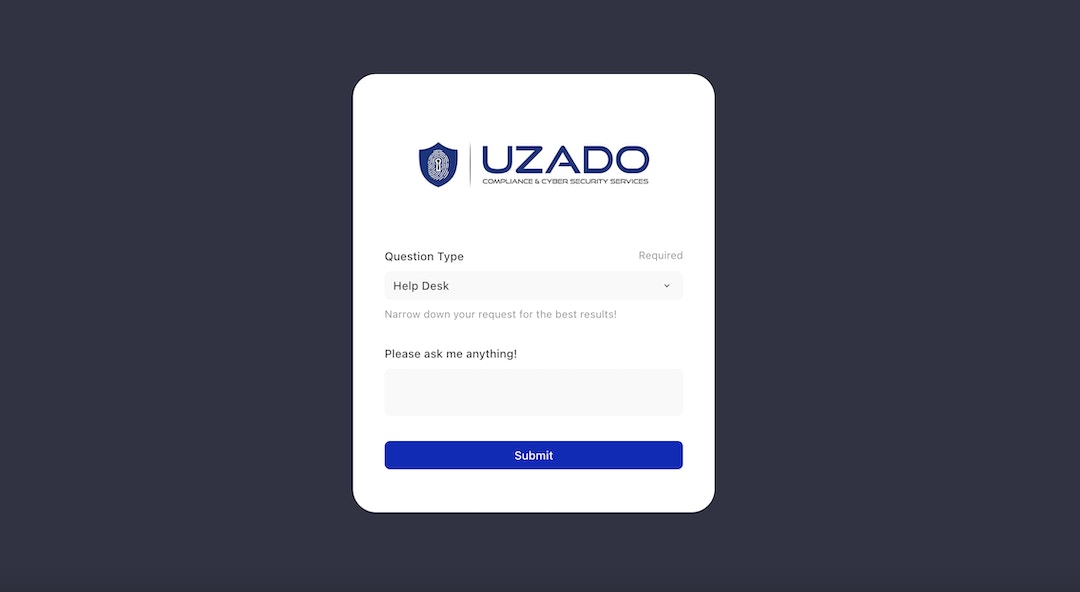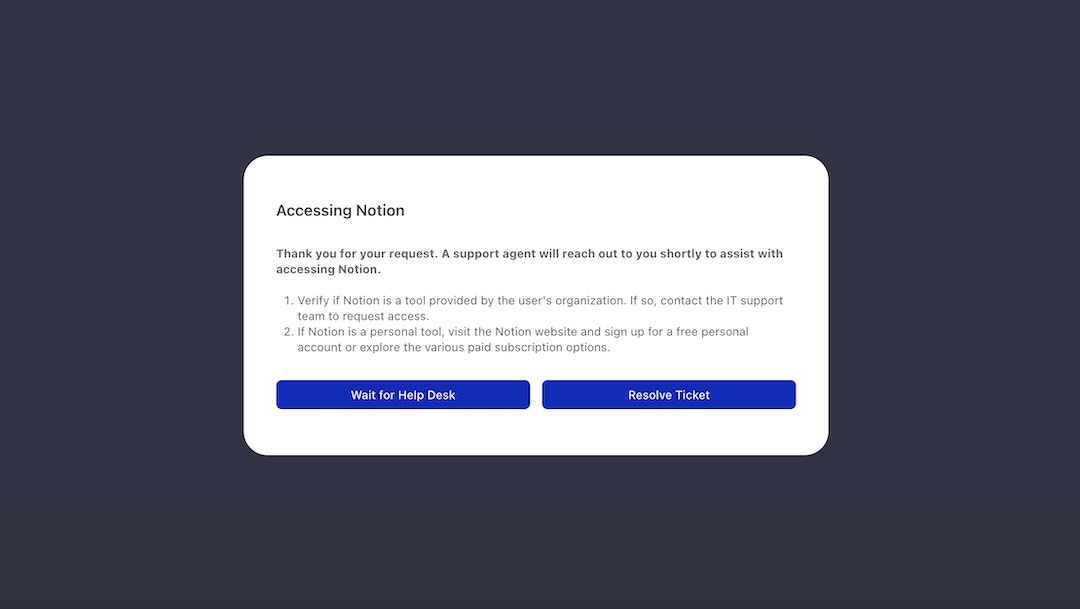In this guest post, Connor Brewer, Principal Solutions Architect at Uzado - a Canadian-based IT and security service provider - showcases an innovative IT help desk app built with AI in Tines, which boasts countless other potential applications.
For many IT and security teams, outdated orchestration and automation solutions create more challenges than solutions. Thankfully, a new wave of next-generation platforms has emerged, offering advanced AI capabilities and integrations that connect the entire tech stack - even legacy tools.
At Uzado, Tines has been this tool for us. Unlike rigid, traditional platforms, its potential use cases for workflow orchestration, automation, and augmentation are limited only by the team’s imagination.
To illustrate, I’ll walk you through a workflow I built to improve ticket-handling outcomes for our IT team. It’s simple yet versatile, with the potential to scale exponentially.
But first, a word on workflow orchestration.
Automation and AI are everywhere - pretty soon, every tool in your stack will have an automation or AI component. But they won’t all be able to orchestrate. They won’t all be able to take data from one system and merge it with data from another.
Orchestration is the real differentiator. For IT and security teams, orchestration provides a single pane of glass, transforming fragmented processes into streamlined ones.
Ticket handling with Tines Pages and applications
The problem - inefficiencies in the ticket handling process
At Uzado, we provide IT and security services to a large roster of customers, so fielding user requests is integral to our success. But dealing with routine tickets often consumes significant time for L1 analysts, leading to;
Alert fatigue: High ticket volumes affect quality and focus.
Context switching: Frequent task shifts hinder progress on high-impact projects.
We needed a solution to streamline ticket handling while freeing up analysts for strategic initiatives. We knew that any efficiency or improvement we made had the potential to deliver huge benefits for our customers and internal teams.
The solution - IT help desk app

A sample webpage with form, built using Tines Pages
This workflow leverages Tines Pages to automate responses to straightforward IT requests.
For example, a user in a meeting discovers their audio isn’t working and requires immediate assistance. While the issue is urgent, it’s also solvable with the right guidance, making it ideal for handling with orchestration, automation, and AI.
At Uzado, these types of requests account for roughly 20% of IT tickets. We estimate that 10% of these could be resolved automatically, representing significant time savings and enabling analysts to focus on more complex challenges.
The benefits extend to end users as well, who often prefer instant, AI-guided troubleshooting over waiting for IT. For example, using the app to resolve a Zoom audio issue can help the user quickly find a solution and rejoin the meeting without delay.

A sample response that the user might receive


Self service helpdesk with AI and Pages
Automate user support workflows by hosting a self-service helpdesk in Tines. Leverage the power of AI and custom-built pages to assist user queries at scale, increasing productivity and empowering your users.
Community author
Connor Brewer at Uzado Inc.
Workflow overview
This app simplifies ticket handling in three steps:
User submission: Requests are entered via a Tines Pages-powered form.
AI triage: The system determines whether the issue is actionable by the user.
Automated response: If actionable, AI provides step-by-step guidance; otherwise, the ticket escalates to an analyst.
Sample LLM prompt
Here’s the LLM prompt I used to craft actionable responses:
You are an expert helpdesk assistant who analyzes requests received by a support team in a Managed Service Provider company.
Your responses are strictly JSON objects without any preamble text or summary text after the JSON.
You create a title for the request, summarize the requests, recommend some actions as an array that could help solve the customer's problems, a polite response to acknowledge the user's request informing them a support agent will reach out to them shortly, and determine whether or not this problem is something a regular user could solve without any special technical knowledge.
Please be very conservative with what you believe is end user actionable. Do not request they reach out to any IT support themselves. Do not request the requestor elaborates on their request.
Analyze the following request and respond using the fields listed below:
title
summary
recommended_action
request_acknowledgement
end_user_actionable
Some assumptions you should hold to be true:
The end user is asking about their personal device or a company owned device unless otherwise stated.
If this is end user actionable, the response you provide needs to be tailored to the requestor in a way that they can themselves solve the problem if you deem that it is a problem which can be resolved by a typical user. If it is not, please tailor the response to an IT professional.
Request: request.body.please_ask_me_anything
Benefits
Let’s take a deeper dive into the potential impact of a workflow like this:
Efficient scaling - allows teams to handle larger ticket volumes without adding additional resources.
Improved user experience - faster response times ensures quicker resolutions, and better prioritization keeps analysts focused on the most urgent tasks.
Cost optimization - reduces manual intervention in routine tasks, saving time and operational costs.
Reduced analyst workload - automates routine tasks like basic troubleshooting, which tend to be the least enjoyable.
Removes blockers to innovation - fewer routine tasks and reduced context switching frees analysts up to focus on more strategic, high-value projects.
Improved user experience - provides users with immediate acknowledgment and clear, actionable solutions.
Flexibility - can be adapted to diverse use cases across departments (e.g., security, DevOps, RevOps).
Expanding applications
This IT help desk app is just the beginning. The same concept can help teams in security, DevOps, RevOps, finance, and even marketing.
Recently, I also developed a security-focused version of the app designed to provide real-time context for alerts as they occur. Regardless of the data source - whether it’s an IT customer, a security team member, or an employee from another department - teams can use a Tines workflow and AI to summarize and format the information, saving time, minimizing manual effort, and enhancing the end-user experience.